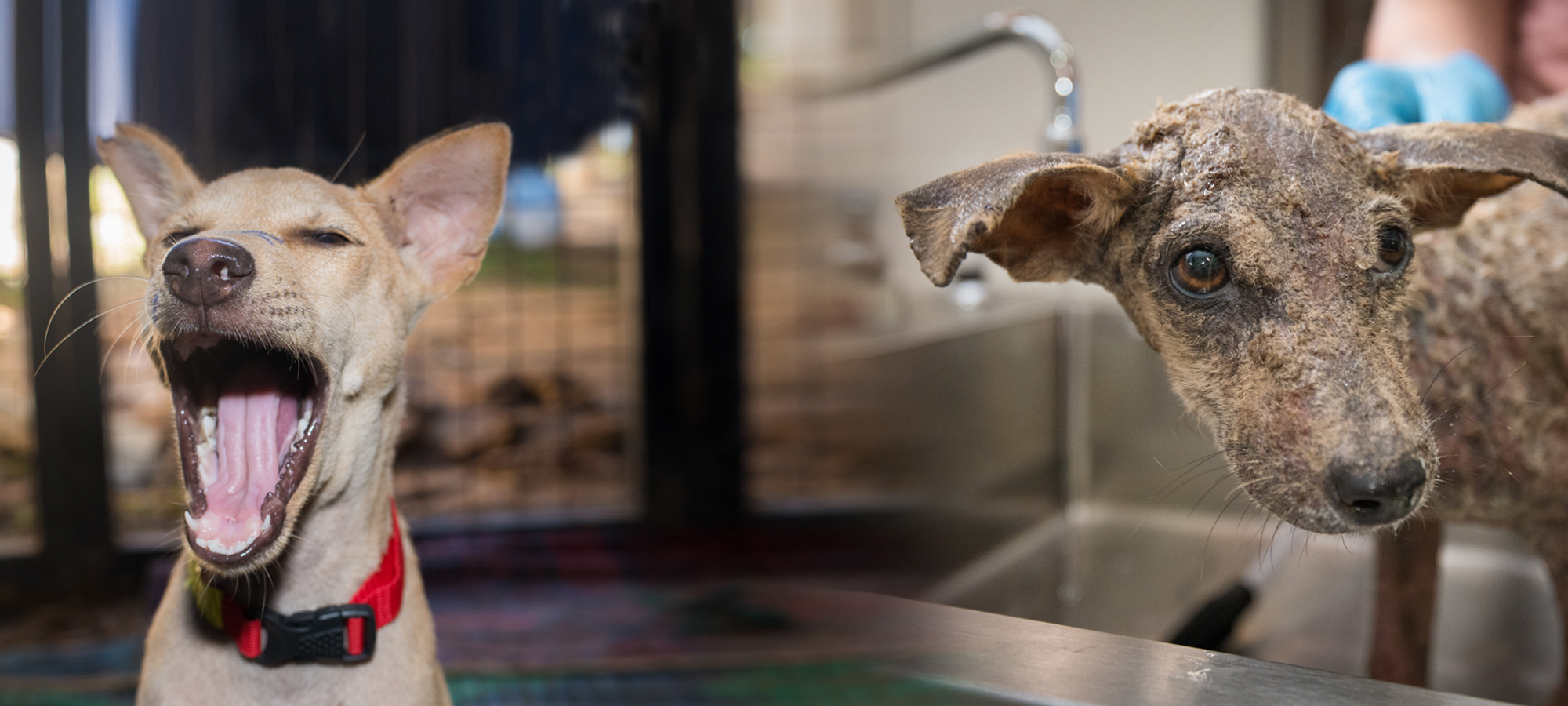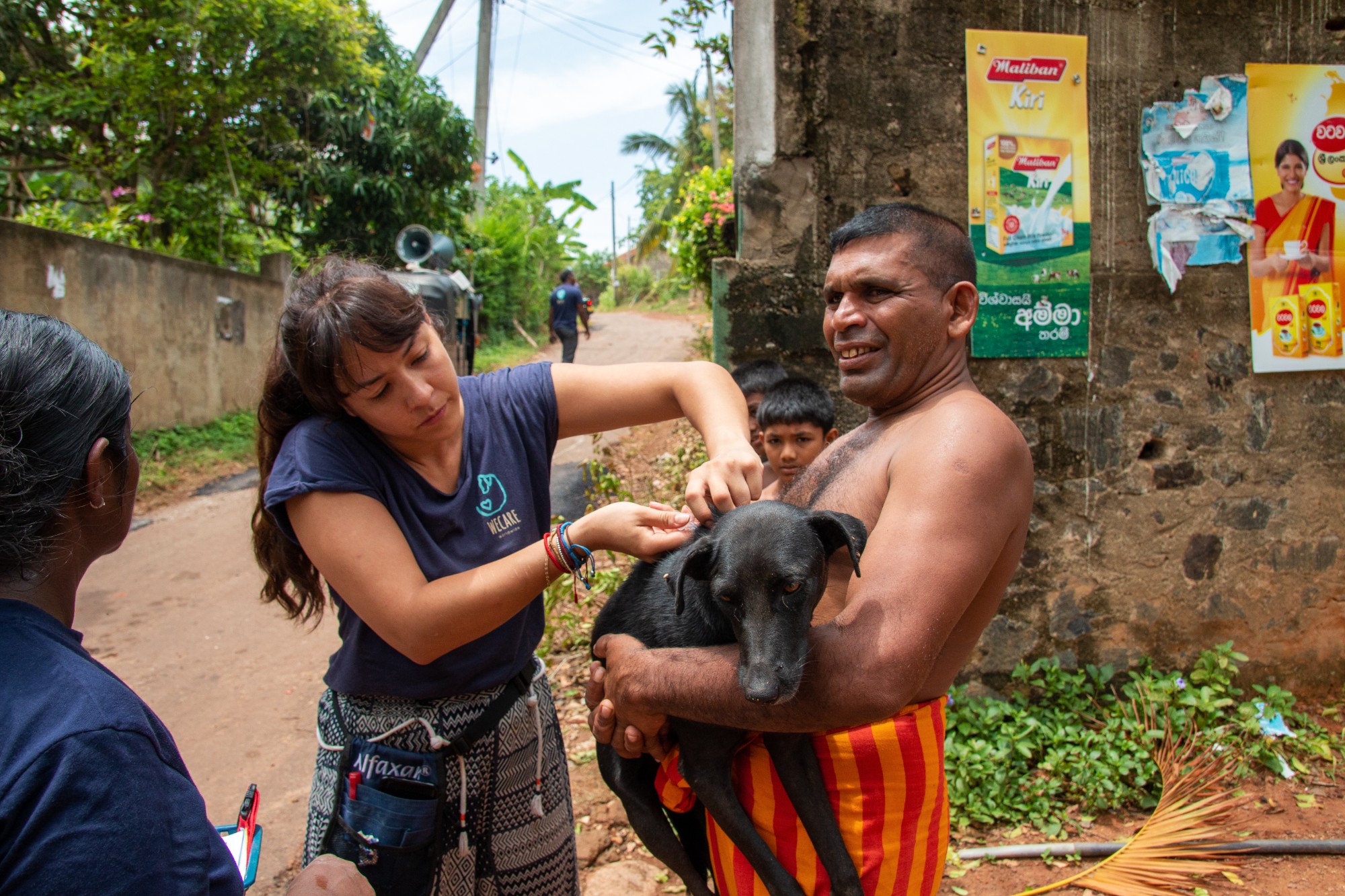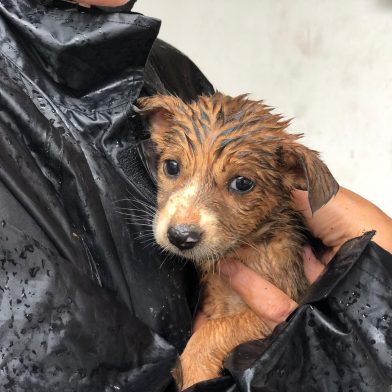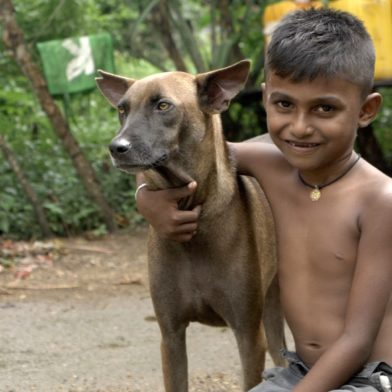
Rabies is a deadly zoonotic disease (one that jumps from animals to humans) that is still present in 150 countries, including Sri Lanka.
The virus is estimated to cause 59,000 human deaths annually, with 95% of cases occurring in Africa and Asia. This number is likely much higher as many deaths go unreported.
Shockingly, according to the World Health Organisation (WHO), one person dies every nine minutes from rabies.
Rabies is more prevalent in poor and disadvantaged communities, where access to education and healthcare is lacking. Over 99% of human rabies deaths are caused by dog bites.
Sadly, children are often victims as they’re more likely to be playing with animals, and unaware of how to avoid animal bites.
This is why vaccinating dogs against rabies is a huge part of what we do.
How is rabies spread?
The rabies virus is spread via the saliva of an infected animal. It’s not spread via their blood, urine or faeces.
Infected saliva cannot make its way through intact skin. The virus infiltrates the body via broken skin (cuts, wounds and scratches), dog bites or through mucous membranes (eyes, nose, mouth).
It then makes its way through the host’s nervous system, from the exposure site to the spinal cord and brain.
The infected person or animal won’t show clinical signs until the virus reaches the brain – the time this takes varies wildly, from a few days to a few months. This is called the incubation period.
The length of incubation depends on the type of rabies, viral load, how far the exposure site is from the brain, and – in humans – if the patient has had a pre-exposure prophylaxis vaccine.
Once the virus reaches the brain, it replicates itself and the host starts showing clinical signs.
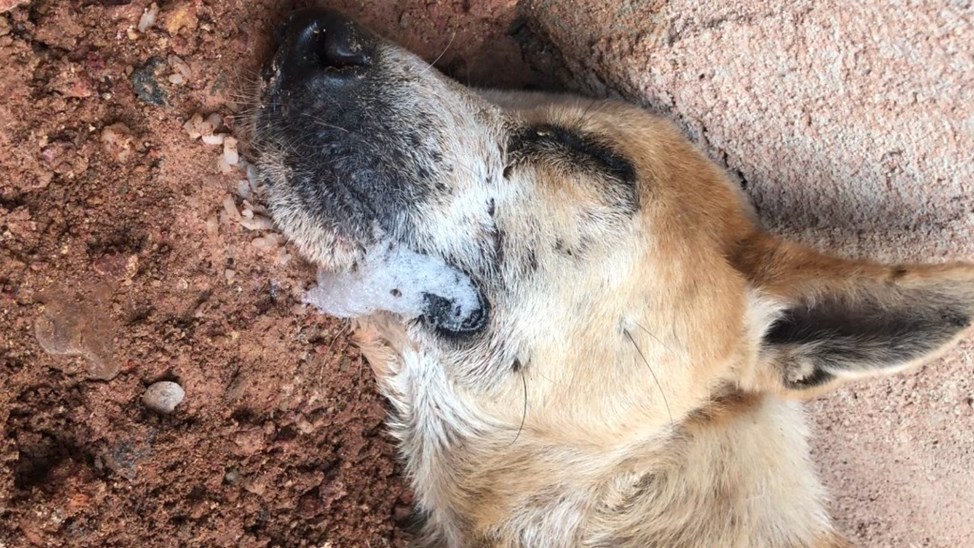
What are canine symptoms of rabies?
According to the WHO, infected animals start developing non-specific signs. Usually they stop eating and drinking, withdraw, may be lethargic, or showing fever, vomiting, and anorexia.
There are two types of rabies – furious and paralytic.
Paralytic rabies is the most common in dogs, showing itself in weakness, paralysis of limbs, facial distortion, difficulty swallowing and the well-known foaming at the mouth (hypersalivation). The dog will eventually slip into a coma and die.
Furious rabies causes hyperactivity, aggression, extreme changes in behaviour, and trying to eat things they wouldn’t normally, like stones or mud. The dog will likely die of a seizure.
Once an animal shows severe signs, it usually dies within 5-6 days.
There is no way of confirming if a living dog has rabies – the only way to tell is by testing tissue from a dead dog’s brain.
What are human symptoms of rabies?
Initial symptoms are the same as many other illnesseses – lethargy, weakness, fever or headache.
These may be followed by neuropathic pain like shooting pains or pins and needles at the site of exposure, or itching.
The patient will deteriorate rapidly, with symptoms of hyperactivity, hydrophobia (fear of water), agitation and hypersalivation presenting in those with furious rabies, which totals around 80% of human cases.
They will usually slip into a coma after a few days and die from cardio-respiratory arrest.
Paralytic rabies makes up around 20% of human cases, running a slower course. Muscle paralysis starts at the site of exposure, gradually spreading through the body, before developing into a coma, resulting in death.
Both are horrific ways to die, and totally preventable with vaccines.
“Help, I’ve been bitten by a street dog!”
We receive a large number of messages from people regarding street dog bites and rabies.
We’re animal doctors, not human doctors, so we always recommend speaking to the human kind for the best advice.
The WHO advises you wash the wound with immediately with soap and water for 15 minutes and to make your way to a hospital that can offer post-exposure prophylaxis (PEP), as soon as possible.
Make sure you get your pre-exposure prophylaxis jabs before travelling to a country where rabies is present. It buys you more time when finding post-exposure treatment.
Is there a cure for rabies?
No. Sadly, once symptoms have developed, rabies is almost always fatal (there is a very small number of human cases who have survived, but these are all anomalies).
You know the phrase ‘prevention is better than cure’? That couldn’t be more relevant to rabies.
Rabies is entirely preventable with a vaccine, and vaccinating dogs is the most cost-effective way of preventing rabies in humans.
It’s a win-win sitution – both human and canine lives are saved.
To date, WECare has vaccinated well over 10,000 animals against rabies. Every street animal that comes through our door/gets picked up at CNVR receives a vaccine, and we organise vaccination drives in local neighourhoods.
However, with zero government funding, we can’t do this without your help.
We’ve seen a shocking number of dogs dying from rabies and it’s an excruciating way to go. Together, we can prevent this.
At £1 a vaccine, every little really does help.
Share this post
Go on, give it a share and spread the word about WECare to all your online pals!
Related reads
